Tomb 33
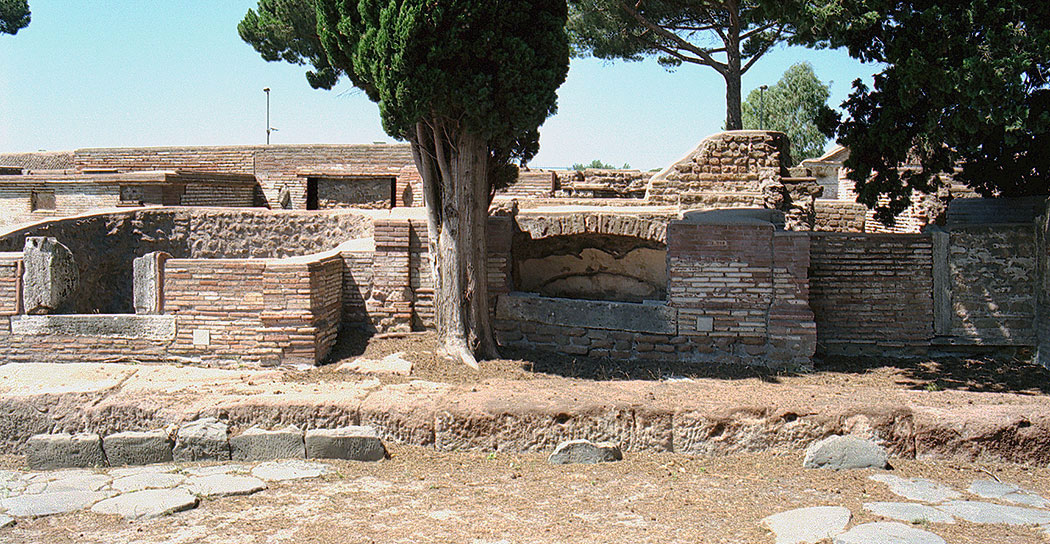
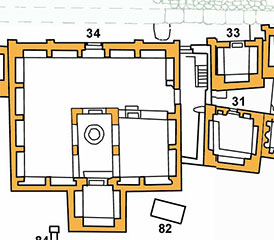 The tomb was built in the space between tombs 30 and 31 and the Via Severiana. Originally there was a passageway right next to tomb 32 to reach the tombs of the second row. Later on the passageway was closed.
The tomb was built in the space between tombs 30 and 31 and the Via Severiana. Originally there was a passageway right next to tomb 32 to reach the tombs of the second row. Later on the passageway was closed.
The walls have survived only to a small height. Of the entrance only the travertine threshold remains.
In the burial chamber one row of arcosolia can still be seen. Every arcosolium had room for three bodies.
Beneath the floor, once covered with marble plates, were three formae.
Tomb 33 dates from the end of the second / beginning of the third century AD.
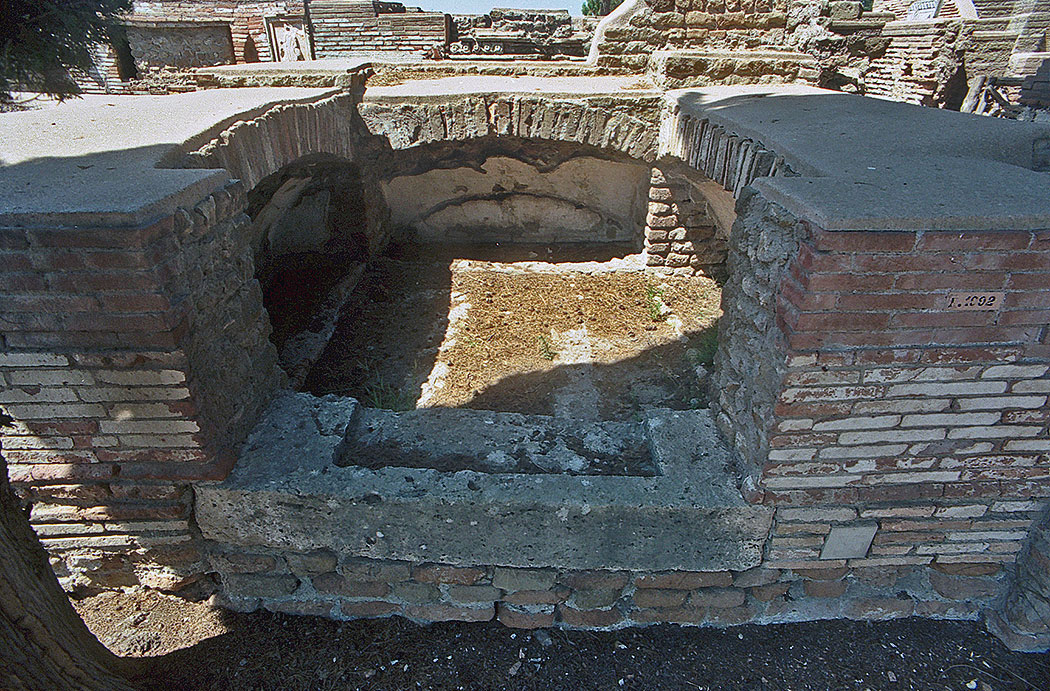
In this grave some traces of the decoration have been preserved. In the niche in the left wall was a painting of two peacocks facing each other, with a small green column between them. The lower part of the niche was painted with rosebuds (Ostia, inv. nrs. 10828a-b). During excavations in 1975, supervised by Ida Baldassarre several fragments of the cover of a marble sarcophagus have been found between the rubble, and a terracotta relief which represented the profession of the tomb owner, a salesman of drapery.
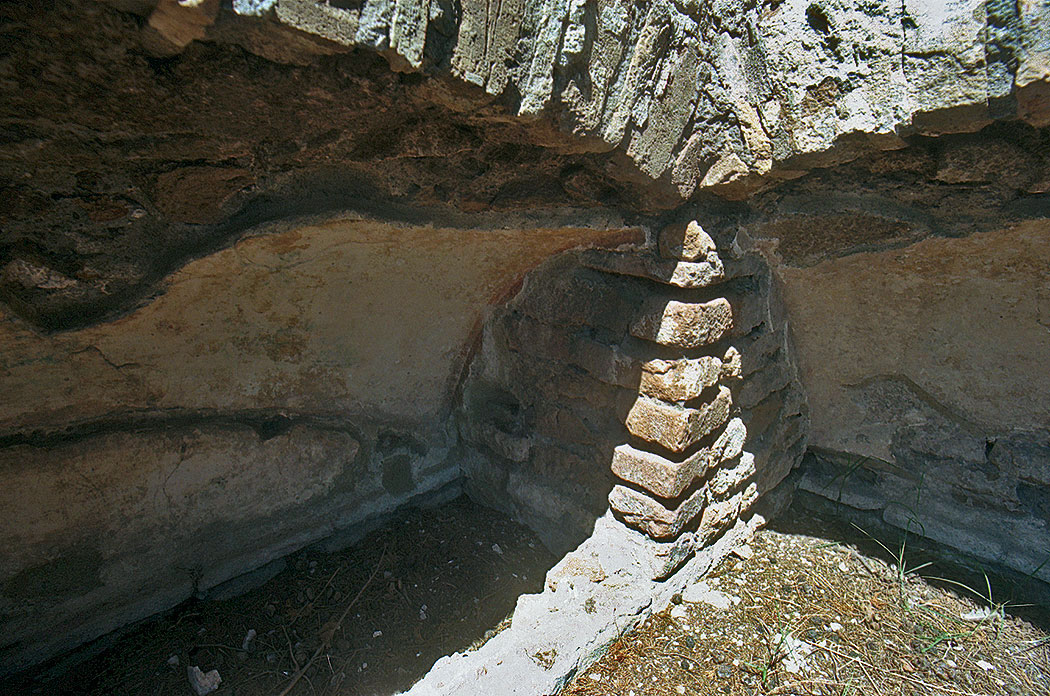
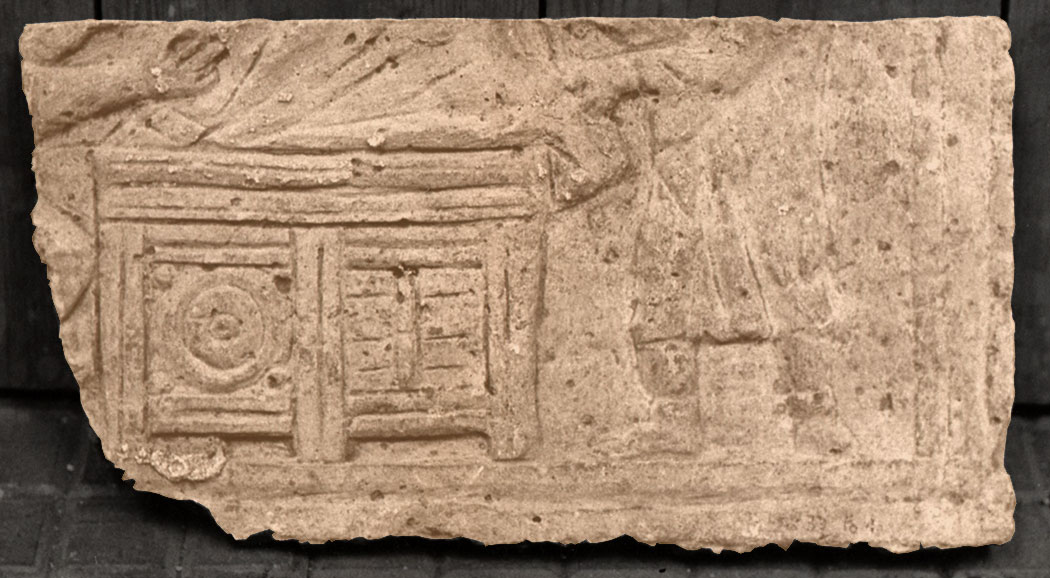
Of the light brown terracotta slab (37 x 19,5 cm) which probably represented the profession of the tomb owner1. Only the lower part has been preserved, which is also damaged on the left side. On the right-hand side, a male figure is depicted, preserved from his feet to his chest, dressed in a short tunic, revealing an open garment; in front of him stands or sits a second figure, of whom only a small part of the right arm and hand, touching the garment, and part of the bent leg have been preserved. The scene takes place in a taberna (shop): the fabric is spread out so that it is clearly visible to the potential customer, whom we should probably recognise as the seated figure; the fabric falls onto a kind of quadrangular counter, probably made of wood, which is depicted in detail and stands on four low legs.
Passage between tombs 33 and 34
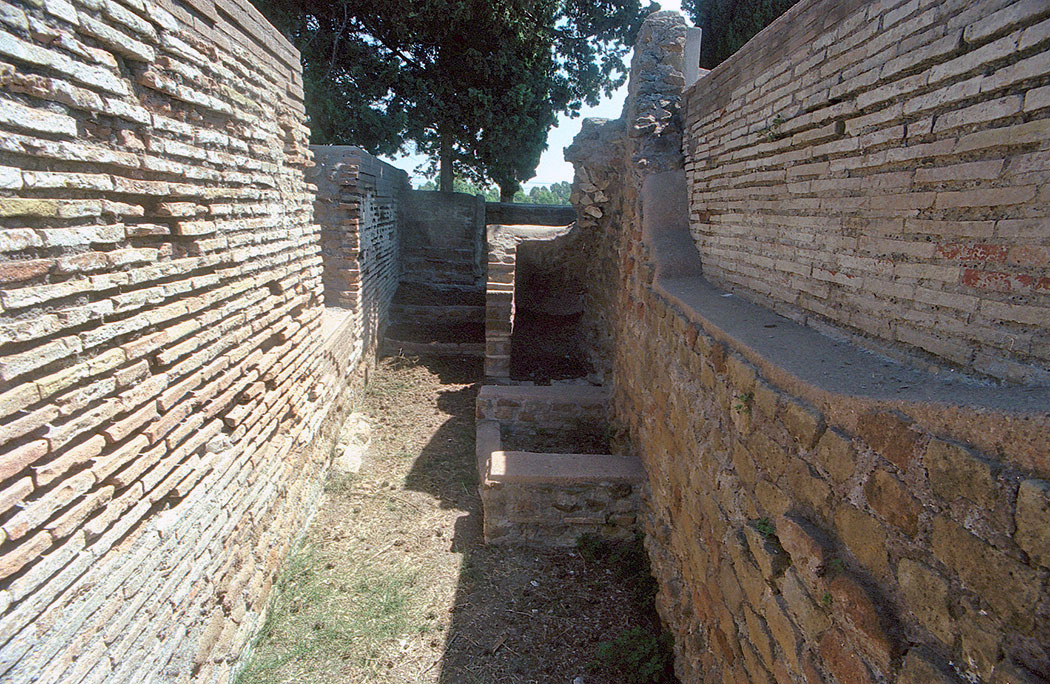
The passage between the front of tomb 31 and the back side of tomb 33 was also closed (the wall with the attached floor-mosaic). In this now closed area was a staircase to an upper floor and a furnace. It is not clear whether the staircase led to the second floor of tomb 31 or tomb 33.

the stairs.
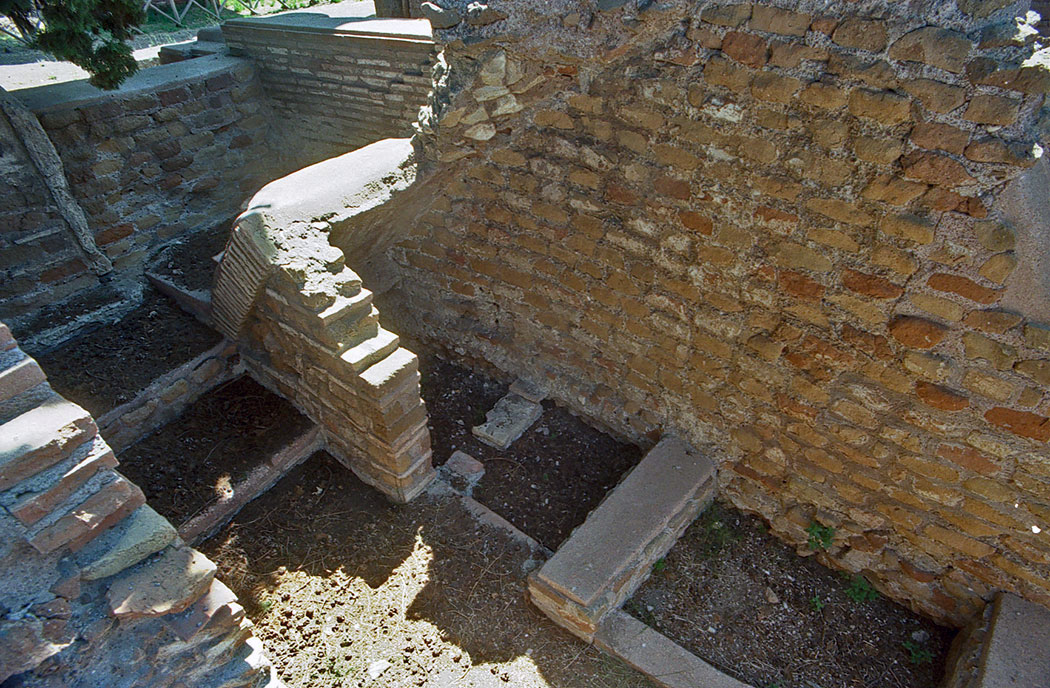
- Sources
- Russel Meigs - Roman Ostia, At the Clarendon Press 1973
- Guido Calza - Necropoli nell'Isola Sacra'(1940)
- Dr. Jan Theo Bakker.
- Hilding Thylander - Inscriptions du port d'Ostie (Lund C W K Gleerup 1952).
- Ida Baldassarre, Irene Bragantini, Chiara Morselli and Franc Taglietti - Necropoli di Porto, Isola Sacra (Roma 1996).
- Notes
- 1: As no other clues have been found, it is not certain that this relief belongs to tomb 33.
Waardeert u ons werk?
Wordt lid van Roman Ports en ontvang het boek of doe een donatie!
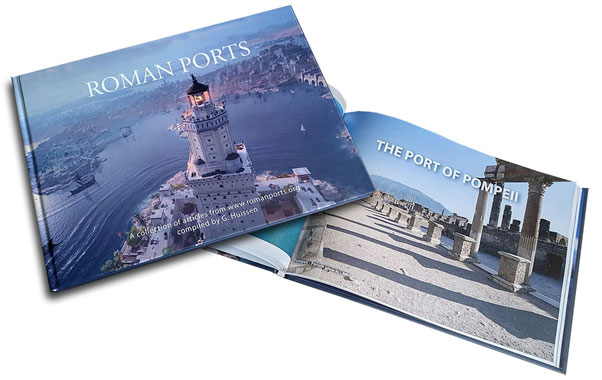 Wordt lid en steun ons
Wordt lid en steun ons
Isola Sacra Index (N)

Speciale sectie over de Romeinse begraafplaats van Portus (Engels)....
Lees meer...De teruggevonden vloot van Pisa

In 1998 werd bij toeval een ongelooflijk archeologisch erfgoed ontdekt in de buurt van het station Pisa San Rossore....
Lees meer...Leptiminus
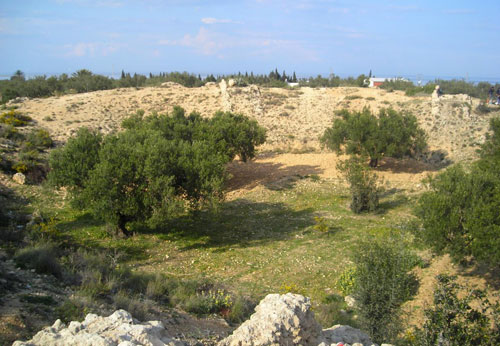
Op de plaats van het huidige Lamta aan de oostkust van Tunesië lag al in de oudheid een havenstad met de naam Leptis Minor ....
Lees meer...Romeins Zeehandelsrecht

Het Romeinse recht is het fraaiste monument dat Rome aan West-Europa heeft nagelaten....
Lees meer...Sullecthum (Salakta)

In de Sahel, in de Tunesische provincie Madhia vinden we aan zee het kleine stadje Salakta....
Lees meer...
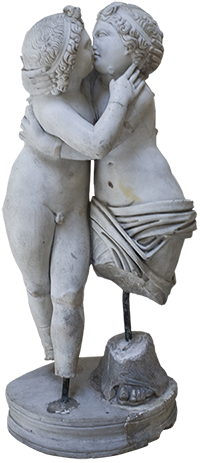 We are committed to providing versions of our articles and interviews in several languages, but our first language is English.
We are committed to providing versions of our articles and interviews in several languages, but our first language is English.